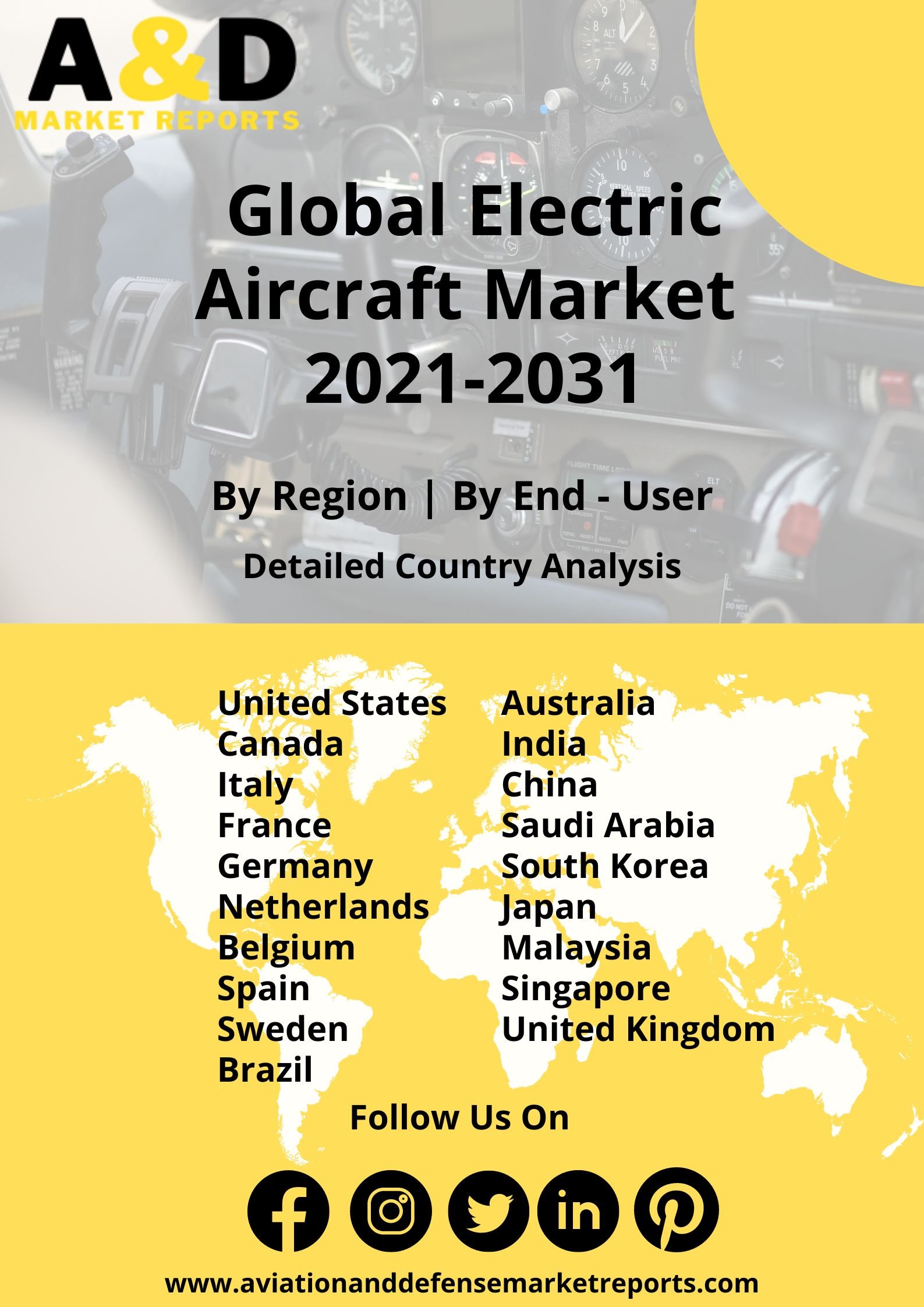Description
Electric Aircraft Market
Frequently Asked Questions of Electric Aircraft
After decades of study and development, electric airplanes are finally finding practical uses. Electric airplanes outperform traditional jet-engine airplanes in terms of response time. Less noise, greater crosswind handling, and the ability to generate differential thrust are one of the key advantages of electric aircraft. All contemporary electric aircraft are propeller-driven. In an electric aircraft, the propeller provides thrust due to airfoil movement. This propeller is powered by an electric motor. Axial flux motors power all modern electric airplanes. To start a jet engine, we must rotate the main shaft of the engine through an air turbine starter, after which fuel is burned to speed up the propeller. Electric motor-powered airplanes, on the other hand, do not require any assistance to start.
The motor in an electric aircraft is directly connected to the propeller, with no transmission in between. However, a transmission is required between the engine and the propeller in a fuel-burning airplane. This was made possible since it is relatively simple to expand the diameter of the rotor in an axial flux motor without increasing its weight. The greater the diameter of a rotor, the more torque it can produce; however, such a diameter increase is not achievable with radial motors because diameter increases make them bulky and heavy. As a result, axial flux motors are the best choice for electric aircraft. The capacity to generate differential thrust is the most significant advantage of electric airplanes. When one propeller spins faster than the other, the airplane produces differential thrust.
Because it is more difficult to manage the engine speed in jet engine airplanes, the net torque produced can yaw the airplane. This interesting differential thrust function comes in handy in one particularly difficult flying condition: crosswinds during landing. The wind has a tremendous impact when landing because the airplane has a low speed or momentum in the situation. Normal jet engine planes handle this using ailerons and a rudder; with electric planes, differential thrust plays a significant part in crosswind landing scenarios; electric planes can employ both differential propulsion and surface controls to balance the airplane.
The battery in an electric airplane is distributed throughout the fuselage area by a robust battery management system. The goal of the BMS is to ensure the optimal use of the energy existing in the battery. The BMS protects the battery against overloading, overcharging, and undercharging while also extending the battery cell’s life. Electric airplanes are great for short journeys and courier services due to their low noise and low maintenance.
Major factors driving Electric Aircraft Market Growth
Electric aircraft can help to reduce air pollution. Electric planes do not emit harmful gases such as CO2 that combustion engines emit. An electric plane can fly with electricity from batteries, fuel cells, solar cells, and so on. In an electric plane, only a small portion of the energy is converted into heat in an electric motor, giving an electric plane less resistance to hot air on engine performance and making electric planes faster than combustion engine planes. Electric blades are quieter than combustion engine blades. These are some of the major market trends that drive the growth of the market.
Trends influencing the Electric-Aircraft Market Size
Battery technology, BMS, and electric motor technology such as axial flux motors are some of the major market trends that will influence the growth of the market. Axial flux motors have thinner but bigger rotors than normal radial motors, which spin alongside the stator rather than inside it. For the same permanent magnet and copper winding provision, the wider radius provides better torque density. Numerous actively maintained independent liquid cooling systems with multiple coolant pumps are required to manage the temperature of the battery packs and motors. Each cell in the battery pack requires both voltage and temperature sensors. This strong sensor array not only enables the thermal management system but also serves as a safety device, informing the pilot of the battery’s health.
Electric-Aircraft Market Forecast & Dynamics
Increasing demand for low-cost short-range aircraft is in demand for short-range trips and package delivery in the civilian sector. Electric aircraft in the defense sector is driven by demand for electric aircraft in pilot training applications due to the cost-benefit that they provide when compared to conventional basic trainer aircraft. The market forecast includes a comprehensive market analysis and market size. The market analysis includes regional market size, drivers, restraints, and opportunities. The regional analysis also includes country-wise market size.
Electric Aircraft Market Analysis for Recent Developments
Amid a technology war with China, the Pentagon is preparing to field its first electric aircraft. After decades of rising military aircraft development costs, Agility Prime is an experiment to investigate if the Pentagon can benefit from cheaper, off-the-shelf, advanced commercial technology. The military plans to use eVTOLs in utility missions to transport people and freight far from airstrips at a lower cost than traditional helicopters. They may also be handy for slipping personnel behind enemy lines and conducting rescue operations because they are quiet. Agility Prime’s 15 participants include piloted eVTOL pioneers Joby Aviation and Beta Technologies, as well as entrepreneurs creating cargo drones Elroy Air and Talyn.
The global landscape of electric aircraft has experienced significant developments, driven by a growing focus on sustainability and the pursuit of cleaner aviation solutions. Electric aircraft, powered by electric propulsion systems, have gained prominence in both commercial and general aviation. In commercial aviation, electric aircraft aim to reduce carbon emissions and noise pollution. Several projects, including electric regional planes and short-haul aircraft, are underway to revolutionize the way passengers travel, especially for shorter routes.
General aviation has seen the emergence of electric vertical takeoff and landing (eVTOL) aircraft for urban air mobility (UAM). These electric air taxis aim to provide efficient and eco-friendly transportation within urban areas, addressing congestion and enhancing mobility. Advancements in battery technology, electric motors, and aerodynamics contribute to the increased feasibility and performance of electric aircraft. Ongoing research and development focus on improving battery energy density, charging infrastructure, and extending the range of electric aviation. Global collaboration, industry partnerships, and regulatory support are essential for the successful integration of electric aircraft into existing aviation ecosystems. The ongoing evolution of electric aircraft in 2023 reflects a commitment to sustainable aviation and the transition towards greener, more efficient air transportation solutions.







